Do you have a question about the Roland DR-880 and is the answer not in the manual?
Explains text and numeral conventions used in the manual, including button indicators and page references.
Provides crucial safety guidelines for operating the unit, covering warnings, cautions, and general precautions.
Details electrical safety, noise considerations, and proper unit placement for optimal operation.
Covers routine maintenance, advice on repairs, and protecting important data.
Lists further safety measures for handling cables, volume levels, and transporting the unit.
Highlights the unit's sound quality, insert effects, COSM modeling, and TSC function.
Details the pattern and song creation capabilities, including EZ Compose and Groove Modify functions.
Explains the guitar/bass input, multi-effects, tuner, USB, MIDI, and various output options.
Identifies and explains the function of each control on the DR-880's front panel and its display.
Details the various input and output jacks located on the rear panel of the DR-880 for connectivity.
Provides a guide for connecting the DR-880 to external audio systems, MIDI devices, and accessories.
Outlines the correct procedure for powering the unit and connected equipment on and off safely.
Explains how to adjust the LCD contrast for optimal readability under different lighting conditions.
Guides the user through playing the DR-880's built-in demo song to showcase its capabilities.
Explains how to use the velocity-sensitive key pads to trigger sounds and switch between different sound banks.
Guides on how to select and play preset or user-created rhythm patterns.
Explains how to adjust the playback tempo of a pattern, including using the Tap Tempo function.
Details how to shift the pitch (key) of a pattern playback using the Key Shift function.
Guides on how to change the instrument sounds (kits) used for a pattern during playback.
Explains how to adjust the overall tone and ambience using TSC patches for sound shaping.
Details how to connect a guitar or bass to the DR-880 for playing along with patterns.
Covers selecting and applying special guitar and bass effects using effect patches.
Explains pattern creation using EZ Compose, Groove Modify, and recording methods, plus sound selection.
Guides on arranging patterns into songs and applying guitar effects for performance.
Covers playing along with patterns, foot switch control, expression pedals, and synchronization.
Details the structure of patterns and songs, including parts, chord progressions, and tempo.
Explains kits as instrument groupings and pad banks for key pad assignments.
Describes the TSC function for overall tone and ambience control via TSC patches.
Introduces guitar/bass effects, algorithms, and effect patch management.
Illustrates the signal path and details the different output jacks and their settings.
Details switching pad banks and navigating menus using the cursor.
Explains how to edit parameter values and understand different display modes on the play screen.
Guides on selecting, playing patterns, and adjusting tempo and key shift.
Describes how to switch between chord progression and pattern display modes on the play screen.
Explains the two primary methods for recording patterns: realtime and step recording.
Details basic pattern settings, recording chord progressions, and adding fill-ins.
Covers essential pattern editing operations like copying, inserting, erasing, and deleting measures.
Guides on naming, saving (writing), and copying user patterns to memory.
Explains how to erase selected patterns and delete unwanted user patterns.
Guides on using EZ Compose to create new patterns by selecting sound groups and combining them.
Explains how to select and apply chord progressions and insert fill-ins into patterns.
Explains how to adjust note velocity to add expression and realistic dynamics to patterns.
Guides on incorporating subtle "ghost notes" and applying a shuffle feel to enhance groove.
Outlines the process of recording songs using step recording, including initial settings.
Details the step-by-step process for recording patterns into a song and managing patterns within a song.
Guides on naming, saving (writing), and copying user songs to memory.
Explains how to clear selected songs and erase unwanted user songs.
Covers starting, stopping, and controlling song playback, including tempo adjustments.
Details changing song key, setting loop points, and switching display modes.
Guides on selecting, switching, and editing guitar/bass effect patches for sound customization.
Explains how to name, save (write), and copy user effect patches.
Provides instructions for using the DR-880's chromatic tuner to tune connected instruments.
Explains how to use an expression pedal for volume control and wah effects.
Details parameters for various effects including Guitar Multi, Bass Multi, and Acoustic Processor.
Guides on accessing and modifying TSC patch settings for EQ and ambience/reverb.
Explains the parameters for stereo equalizer and ambience/reverb effects within TSC patches.
Guides on naming, saving (writing), and copying user TSC patches.
Guides on selecting kits and editing drum and bass parts, including common settings.
Details the parameters for editing drum and bass sounds, including instruments, effects, and envelope.
Covers naming, writing (saving), and copying user-created kits to memory.
Explains how to register and recall favorite patterns, songs, or effect patches for quick access.
Describes how to save multiple settings (patterns, kits, TSC, effects) in a single operation.
Covers configuring output signal settings and adjusting bass part tuning.
Explains pad sensitivity, foot switch setup, and adding count-in measures.
Details using a single kit/TSC patch and specifying the power-on pattern.
Explains MIDI basics, implementation charts, and the DR-880's MIDI IN/OUT connectors.
Details setting MIDI channels and volume receive for controlling the DR-880 from external MIDI devices.
Guides on recording performances from MIDI keyboards, pads, sequencers, or rhythm machines onto the DR-880.
Explains how to transmit (bulk dump) and receive DR-880 data to/from MIDI devices.
Details how to connect the DR-880 to a computer via USB for various functions.
Guides on creating patterns by importing Standard MIDI Files (SMF) from a computer.
Explains backing up data, restoring it, and setting up MIDI communication via USB.
Details the procedure for resetting the DR-880 to its original factory default settings.
Provides solutions for common sound problems, interruptions, and MIDI communication issues.
Covers troubleshooting USB connectivity and system errors, including error message interpretation.
Lists and explains various error messages, their causes, and recommended actions for resolution.
Lists parameters for patterns, songs, and system settings, including ranges and reset values.
Details parameters for LCD, pads, foot switches, MIDI settings, and USB modes.
Provides lists of preset instrument sounds and kits available on the DR-880.
Details preset TSC patches, effect patches, and rhythm patterns for quick reference.
Details the MIDI messages the DR-880 transmits and recognizes, including channel and mode information.
Lists the technical specifications of the DR-880, including polyphony, storage, dimensions, weight, and included accessories.
Provides FCC, European, and Canadian compliance statements and safety information for the device.
Explains text and numeral conventions used in the manual, including button indicators and page references.
Provides crucial safety guidelines for operating the unit, covering warnings, cautions, and general precautions.
Details electrical safety, noise considerations, and proper unit placement for optimal operation.
Covers routine maintenance, advice on repairs, and protecting important data.
Lists further safety measures for handling cables, volume levels, and transporting the unit.
Highlights the unit's sound quality, insert effects, COSM modeling, and TSC function.
Details the pattern and song creation capabilities, including EZ Compose and Groove Modify functions.
Explains the guitar/bass input, multi-effects, tuner, USB, MIDI, and various output options.
Identifies and explains the function of each control on the DR-880's front panel and its display.
Details the various input and output jacks located on the rear panel of the DR-880 for connectivity.
Provides a guide for connecting the DR-880 to external audio systems, MIDI devices, and accessories.
Outlines the correct procedure for powering the unit and connected equipment on and off safely.
Explains how to adjust the LCD contrast for optimal readability under different lighting conditions.
Guides the user through playing the DR-880's built-in demo song to showcase its capabilities.
Explains how to use the velocity-sensitive key pads to trigger sounds and switch between different sound banks.
Guides on how to select and play preset or user-created rhythm patterns.
Explains how to adjust the playback tempo of a pattern, including using the Tap Tempo function.
Details how to shift the pitch (key) of a pattern playback using the Key Shift function.
Guides on how to change the instrument sounds (kits) used for a pattern during playback.
Explains how to adjust the overall tone and ambience using TSC patches for sound shaping.
Details how to connect a guitar or bass to the DR-880 for playing along with patterns.
Covers selecting and applying special guitar and bass effects using effect patches.
Explains pattern creation using EZ Compose, Groove Modify, and recording methods, plus sound selection.
Guides on arranging patterns into songs and applying guitar effects for performance.
Covers playing along with patterns, foot switch control, expression pedals, and synchronization.
Details the structure of patterns and songs, including parts, chord progressions, and tempo.
Explains kits as instrument groupings and pad banks for key pad assignments.
Describes the TSC function for overall tone and ambience control via TSC patches.
Introduces guitar/bass effects, algorithms, and effect patch management.
Illustrates the signal path and details the different output jacks and their settings.
Details switching pad banks and navigating menus using the cursor.
Explains how to edit parameter values and understand different display modes on the play screen.
Guides on selecting, playing patterns, and adjusting tempo and key shift.
Describes how to switch between chord progression and pattern display modes on the play screen.
Explains the two primary methods for recording patterns: realtime and step recording.
Details basic pattern settings, recording chord progressions, and adding fill-ins.
Covers essential pattern editing operations like copying, inserting, erasing, and deleting measures.
Guides on naming, saving (writing), and copying user patterns to memory.
Explains how to erase selected patterns and delete unwanted user patterns.
Guides on using EZ Compose to create new patterns by selecting sound groups and combining them.
Explains how to select and apply chord progressions and insert fill-ins into patterns.
Explains how to adjust note velocity to add expression and realistic dynamics to patterns.
Guides on incorporating subtle "ghost notes" and applying a shuffle feel to enhance groove.
Outlines the process of recording songs using step recording, including initial settings.
Details the step-by-step process for recording patterns into a song and managing patterns within a song.
Guides on naming, saving (writing), and copying user songs to memory.
Explains how to clear selected songs and erase unwanted user songs.
Covers starting, stopping, and controlling song playback, including tempo adjustments.
Details changing song key, setting loop points, and switching display modes.
Guides on selecting, switching, and editing guitar/bass effect patches for sound customization.
Explains how to name, save (write), and copy user effect patches.
Provides instructions for using the DR-880's chromatic tuner to tune connected instruments.
Explains how to use an expression pedal for volume control and wah effects.
Details parameters for various effects including Guitar Multi, Bass Multi, and Acoustic Processor.
Guides on accessing and modifying TSC patch settings for EQ and ambience/reverb.
Explains the parameters for stereo equalizer and ambience/reverb effects within TSC patches.
Guides on naming, saving (writing), and copying user TSC patches.
Guides on selecting kits and editing drum and bass parts, including common settings.
Details the parameters for editing drum and bass sounds, including instruments, effects, and envelope.
Covers naming, writing (saving), and copying user-created kits to memory.
Explains how to register and recall favorite patterns, songs, or effect patches for quick access.
Describes how to save multiple settings (patterns, kits, TSC, effects) in a single operation.
Covers configuring output signal settings and adjusting bass part tuning.
Explains pad sensitivity, foot switch setup, and adding count-in measures.
Details using a single kit/TSC patch and specifying the power-on pattern.
Explains MIDI basics, implementation charts, and the DR-880's MIDI IN/OUT connectors.
Details setting MIDI channels and volume receive for controlling the DR-880 from external MIDI devices.
Guides on recording performances from MIDI keyboards, pads, sequencers, or rhythm machines onto the DR-880.
Explains how to transmit (bulk dump) and receive DR-880 data to/from MIDI devices.
Details how to connect the DR-880 to a computer via USB for various functions.
Guides on creating patterns by importing Standard MIDI Files (SMF) from a computer.
Explains backing up data, restoring it, and setting up MIDI communication via USB.
Details the procedure for resetting the DR-880 to its original factory default settings.
Provides solutions for common sound problems, interruptions, and MIDI communication issues.
Covers troubleshooting USB connectivity and system errors, including error message interpretation.
Lists and explains various error messages, their causes, and recommended actions for resolution.
Lists parameters for patterns, songs, and system settings, including ranges and reset values.
Details parameters for LCD, pads, foot switches, MIDI settings, and USB modes.
Provides lists of preset instrument sounds and kits available on the DR-880.
Details preset TSC patches, effect patches, and rhythm patterns for quick reference.
Details the MIDI messages the DR-880 transmits and recognizes, including channel and mode information.
Lists the technical specifications of the DR-880, including polyphony, storage, dimensions, weight, and included accessories.
Provides FCC, European, and Canadian compliance statements and safety information for the device.
| Type | Drum Machine |
|---|---|
| Polyphony | 64 voices |
| Power | 9V DC |
| Sampling Rate | 44.1 kHz |
| Bit Depth | 16-bit |
| Display | Backlit LCD |
| Drum Kits | 50 preset kits + 50 user kits |
| Effects | Reverb, Chorus, EQ, Compressor |
| Outputs | 2 x 1/4" (Main), 1 x 1/4" (Headphones) |
| MIDI | In, Out |
| Pads | velocity-sensitive pads |
| Weight | 1.4 kg |
| Sound Generator | Digital PCM |
| Sounds | 1, 000 sounds |
| Sounds Amount | 1, 000 sounds |
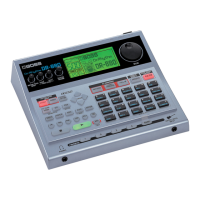
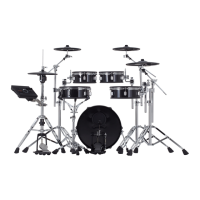

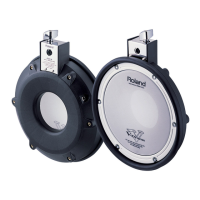
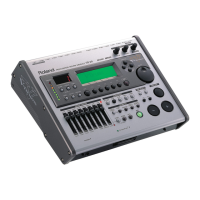
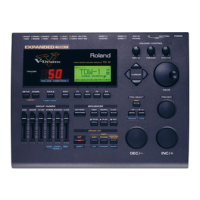
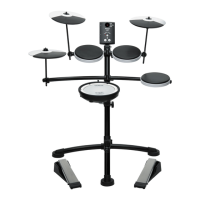
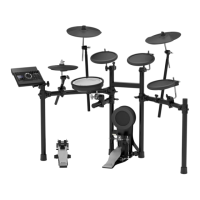
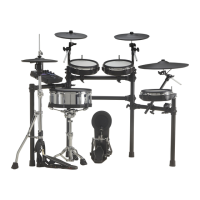

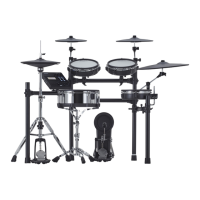
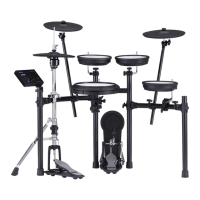
